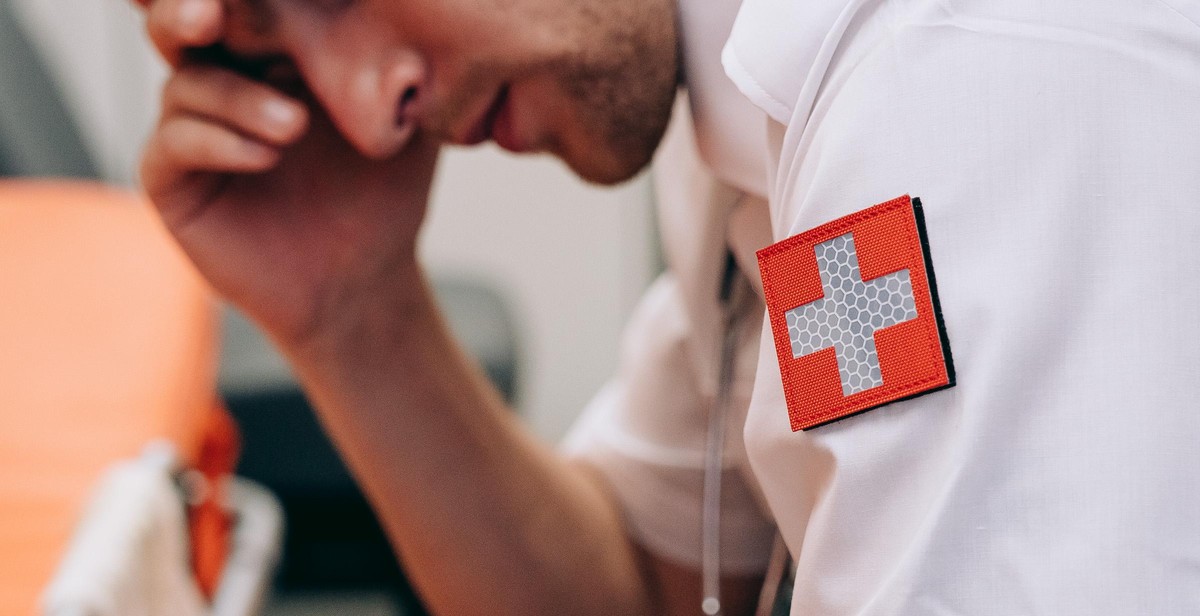How to Treat Volleyball Injuries: First Aid and Recovery Tips for Common Volleyball Injuries
As a professional volleyball player with over 10 years of experience, I have seen and experienced my fair share of injuries. From sprained ankles to shoulder dislocations, volleyball can be a physically demanding sport that can lead to a wide range of injuries. However, with the right knowledge and treatment, many of these injuries can be effectively managed and even prevented.
Common Volleyball Injuries
Some of the most common volleyball injuries include:
- Ankle sprains
- Knee injuries, such as ACL tears
- Shoulder injuries, such as rotator cuff tears and dislocations
- Finger and wrist injuries, such as jammed fingers and tendonitis
- Back pain and strains
First Aid for Volleyball Injuries
When an injury occurs, it’s important to take immediate action to prevent further damage and promote healing. Some first aid tips for volleyball injuries include:
- Rest, ice, compression, and elevation (RICE)
- Taking over-the-counter pain relievers, such as ibuprofen
- Using braces or wraps to support the injured area
- Seeking medical attention if the injury is severe or does not improve
Recovery Tips for Volleyball Injuries
Once the initial first aid has been administered, it’s important to take steps to promote healing and prevent future injuries. Some recovery tips for volleyball injuries include:
- Gradually returning to physical activity after the injury has healed
- Performing stretching and strengthening exercises to improve flexibility and prevent future injuries
- Wearing appropriate protective gear, such as knee pads and ankle braces
- Listening to your body and taking breaks when needed
Conclusion
By following these first aid and recovery tips, you can effectively manage and prevent many common volleyball injuries. However, it’s important to always prioritize your health and seek medical attention if an injury is severe or does not improve with home treatment.
Common Volleyball Injuries
Volleyball is a popular sport that requires quick movements, jumping, and sudden changes in direction. As a result, players are at risk of sustaining various injuries. Here are some of the most common volleyball injuries:
Ankle Sprains
Ankle sprains occur when the ligaments that support the ankle joint are stretched or torn. This injury is common in volleyball due to the frequent jumping and landing. Symptoms include pain, swelling, and difficulty walking. Treatment involves rest, ice, compression, and elevation. In severe cases, surgery may be required.
Knee Injuries
Knee injuries are also common in volleyball, particularly among players who frequently jump and land. The most common knee injuries include patellar tendinitis, ACL tears, and meniscus tears. Symptoms may include pain, swelling, and instability. Treatment depends on the severity of the injury and may include rest, ice, physical therapy, and surgery.
Shoulder Injuries
Shoulder injuries are common in volleyball due to the frequent overhead movements required by the sport. The most common shoulder injuries include rotator cuff tears, labral tears, and shoulder impingement. Symptoms may include pain, weakness, and difficulty lifting the arm. Treatment may include rest, ice, physical therapy, and surgery.
Wrist Injuries
Wrist injuries are common in volleyball due to the repetitive motions involved in serving, spiking, and blocking. The most common wrist injuries include sprains, strains, and tendonitis. Symptoms may include pain, swelling, and difficulty gripping objects. Treatment may include rest, ice, physical therapy, and immobilization with a brace or cast.
| Injury | Symptoms | Treatment |
|---|---|---|
| Ankle Sprains | Pain, swelling, difficulty walking | Rest, ice, compression, elevation, surgery (in severe cases) |
| Knee Injuries | Pain, swelling, instability | Rest, ice, physical therapy, surgery (in severe cases) |
| Shoulder Injuries | Pain, weakness, difficulty lifting arm | Rest, ice, physical therapy, surgery (in severe cases) |
| Wrist Injuries | Pain, swelling, difficulty gripping objects | Rest, ice, physical therapy, immobilization with brace or cast |

First Aid Tips for Volleyball Injuries
Playing volleyball can be a lot of fun, but it can also lead to injuries. Whether you’re a seasoned player or a beginner, it’s important to know how to treat common volleyball injuries. Here are some first aid tips to help you recover quickly:
Rest and Ice
If you’ve sustained an injury while playing volleyball, the first thing you should do is rest the affected area. This will help prevent further damage and promote healing. Applying ice to the injury can also help reduce swelling and pain. Wrap ice in a towel and apply it to the affected area for 15-20 minutes at a time, several times a day.
Compression
Compression can help reduce swelling and provide support to the affected area. Use a compression bandage or wrap to apply gentle pressure to the injury. Be careful not to wrap too tightly, as this can cut off circulation.
Elevation
Elevating the injured area can also help reduce swelling. Prop up the affected limb on a pillow or cushion to elevate it above the level of your heart. This will help improve blood flow and reduce swelling.
Pain Relief
If you’re in pain, you can take over-the-counter pain medication such as ibuprofen or acetaminophen. Be sure to follow the recommended dosage and talk to your doctor if you have any concerns.
| Injury | First Aid Tips |
|---|---|
| Sprained ankle | Rest, ice, compression, elevation, pain relief, and see a doctor if the injury is severe or doesn’t improve within a few days. |
| Rotator cuff injury | Rest, ice, pain relief, and see a doctor for diagnosis and treatment. |
| Tennis elbow | Rest, ice, compression, elevation, pain relief, and see a doctor for diagnosis and treatment. |
| Knee injury | Rest, ice, compression, elevation, pain relief, and see a doctor for diagnosis and treatment. |
Remember, if you’re experiencing pain or discomfort after a volleyball injury, it’s important to seek medical attention. Your doctor can help diagnose the injury and provide treatment options to help you recover quickly and safely.

Recovery Tips for Volleyball Injuries
Recovering from a volleyball injury can be a daunting task, but with the right approach and mindset, you can get back on the court in no time. Here are some recovery tips for common volleyball injuries:
Physical Therapy
Physical therapy is an essential part of the recovery process for most volleyball injuries. A physical therapist can help you regain strength and mobility in the affected area while also reducing pain and inflammation. They can also provide you with exercises and stretches to do at home to speed up your recovery.
Stretching and Strengthening Exercises
Stretching and strengthening exercises can help prevent future injuries and speed up your recovery. Focus on exercises that target the affected area, such as ankle rolls and calf stretches for ankle injuries, or shoulder rotations and chest stretches for shoulder injuries. Gradually increase the intensity and duration of your exercises to avoid overexertion and reinjury.
Gradual Return to Play
A gradual return to play is crucial for preventing reinjury and ensuring a successful recovery. Start with light activities, such as jogging or light ball handling, and gradually increase the intensity and duration of your workouts. Listen to your body and take breaks as needed to avoid overexertion.
| Common Volleyball Injuries | Recovery Tips |
|---|---|
| Ankle Sprains | Physical therapy, ankle rolls, calf stretches, gradual return to play |
| Shoulder Injuries | Physical therapy, shoulder rotations, chest stretches, gradual return to play |
| Knee Injuries | Physical therapy, quad stretches, hamstring curls, gradual return to play |
Remember to always consult with a medical professional before starting any recovery plan. With patience and dedication, you can overcome your volleyball injury and get back to doing what you love.

Preventing Volleyball Injuries
Preventing volleyball injuries is crucial to avoid pain and discomfort that could interfere with your game. Here are some tips to help you prevent injuries:
Proper Warm-Up and Cool-Down
Before every volleyball game or practice, make sure you take the time to warm up and stretch your muscles. This will help prevent strains and sprains. A proper warm-up should include light aerobic exercise, stretching, and drills that mimic the movements you’ll be doing during the game. After the game or practice, take some time to cool down and stretch as well.
Wearing Protective Gear
Wearing the proper protective gear can help reduce the risk of injury. Make sure you wear knee pads to protect your knees from impact with the floor during dives and falls. Ankle braces can also help prevent sprains and strains. In addition, make sure you wear appropriate shoes with good support and traction to avoid slipping and falling.
Playing on Safe Surfaces
Playing on a safe surface is important to prevent injuries. Make sure the playing surface is free from debris, slippery substances, and any obstacles that could cause you to trip or fall. If you’re playing on a hard surface, consider using a softer ball to reduce the impact on your joints.
Avoiding Overuse Injuries
Overuse injuries are common in volleyball players, especially those who play frequently. To avoid overuse injuries, make sure you vary your training routine and don’t overdo it. Take breaks and rest when necessary. Make sure you also listen to your body and don’t push through pain or discomfort.
By following these tips, you can reduce your risk of volleyball injuries and stay in top shape to enjoy the game.
Conclusion
As a seasoned volleyball player or enthusiast, it’s crucial to know the first aid and recovery tips for common volleyball injuries. Whether you’re dealing with ankle sprains, knee injuries, or shoulder pain, taking the appropriate steps to treat and prevent these injuries can make a significant difference in your recovery time and overall performance on the court.
Remember to always seek medical attention if the injury is severe or if you experience persistent pain. Don’t push through the pain, as this could lead to further damage and a longer recovery time.
Key takeaways
- Apply RICE (Rest, Ice, Compression, Elevation) immediately after an injury to reduce swelling and pain
- Seek medical attention if the injury is severe or if you experience persistent pain
- Work with a physical therapist to develop a rehabilitation plan that can help you recover and prevent future injuries
- Take steps to prevent injuries, such as warming up before playing and wearing appropriate protective gear
Stay safe and healthy on the court
By following these first aid and recovery tips for common volleyball injuries, you can stay safe and healthy while playing the sport you love. Remember to always listen to your body, take breaks when needed, and prioritize your health above all else.
